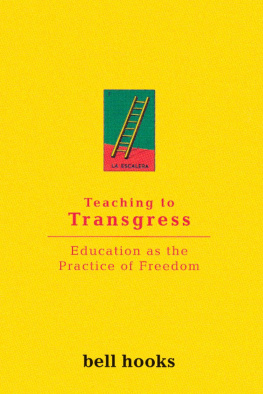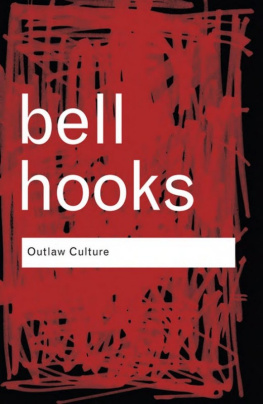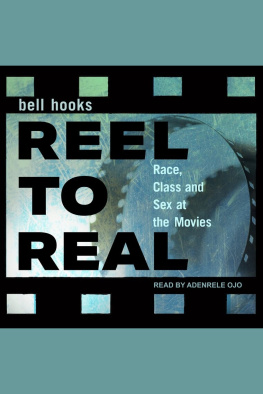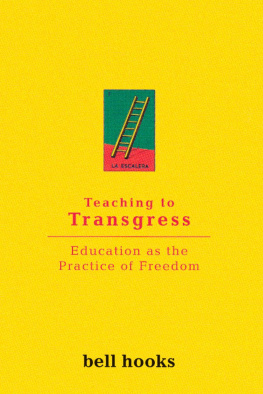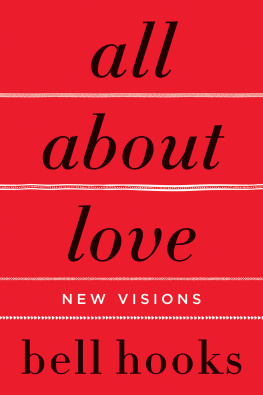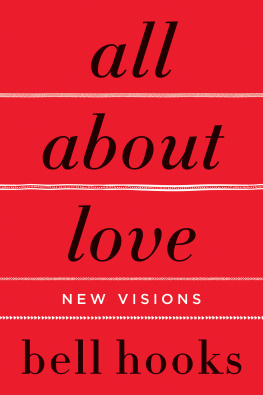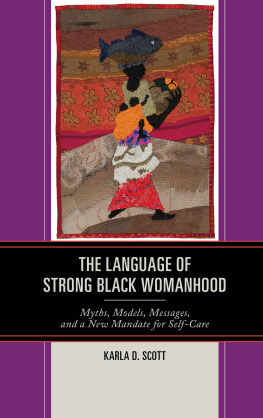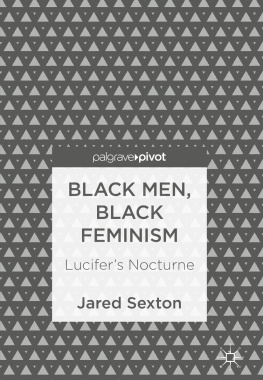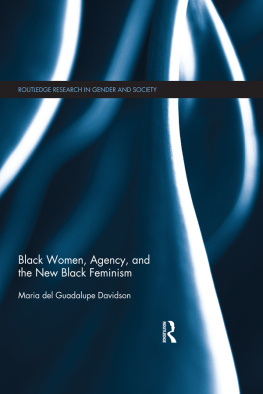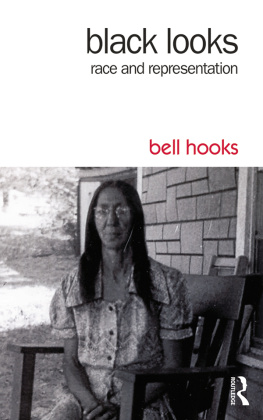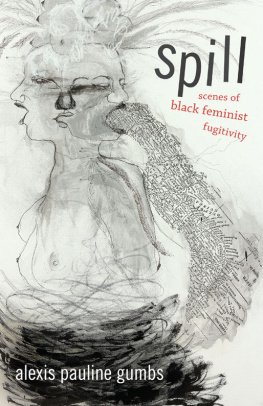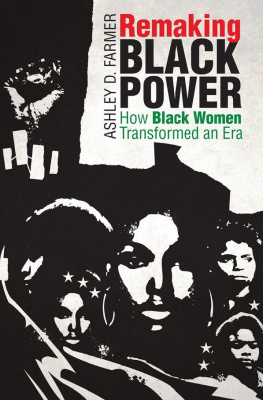Bell Hooks - Ain’t I a Woman: Black Women and Feminism
Here you can read online Bell Hooks - Ain’t I a Woman: Black Women and Feminism full text of the book (entire story) in english for free. Download pdf and epub, get meaning, cover and reviews about this ebook. year: 2014, publisher: Routledge, genre: Non-fiction / History. Description of the work, (preface) as well as reviews are available. Best literature library LitArk.com created for fans of good reading and offers a wide selection of genres:
Romance novel
Science fiction
Adventure
Detective
Science
History
Home and family
Prose
Art
Politics
Computer
Non-fiction
Religion
Business
Children
Humor
Choose a favorite category and find really read worthwhile books. Enjoy immersion in the world of imagination, feel the emotions of the characters or learn something new for yourself, make an fascinating discovery.
- Book:Ain’t I a Woman: Black Women and Feminism
- Author:
- Publisher:Routledge
- Genre:
- Year:2014
- Rating:4 / 5
- Favourites:Add to favourites
- Your mark:
- 80
- 1
- 2
- 3
- 4
- 5
Ain’t I a Woman: Black Women and Feminism: summary, description and annotation
We offer to read an annotation, description, summary or preface (depends on what the author of the book "Ain’t I a Woman: Black Women and Feminism" wrote himself). If you haven't found the necessary information about the book — write in the comments, we will try to find it.
Ain’t I a Woman: Black Women and Feminism — read online for free the complete book (whole text) full work
Below is the text of the book, divided by pages. System saving the place of the last page read, allows you to conveniently read the book "Ain’t I a Woman: Black Women and Feminism" online for free, without having to search again every time where you left off. Put a bookmark, and you can go to the page where you finished reading at any time.
Font size:
Interval:
Bookmark:
Sexism and the Black Female Slave Experience
In a retrospective examination of the black female slave experience, sexism looms as large as racism as an oppressive force in the lives of black women. Institutionalized sexism that is, patriarchyformed the base of the American social structure along with racial imperialism. Sexism was an integral part of the social and political order white colonizers brought with them from their European homelands, and it was to have a grave impact on the fate of enslaved black women. In its earliest stages, the slave trade focused primarily on the importation of laborers; the emphasis at that time was on the black male. The black female slave was not as valued as the black male slave. On the average, it cost more money to buy a male slave than a female slave. The scarcity of workers coupled with the relatively few numbers of black women in American colonies caused some white male planters to encourage, persuade, and coerce immigrant white females to engage in sexual relationships with black male slaves as a means of producing new workers. In Maryland, in the year 1664, the first anti-amalgamation law was passed; it was aimed at curtailing sexual relationships between white women and enslaved black men. One part of the preamble of this document stated:
That whatsoever freeborn woman shall intermarry with any slave, from and after the last day of the present assembly, shall serve the masters of such slaves during the life of her husband; and that all the issue of such free born women, so married shall be slaves as their fathers were.
The most celebrated case of this time was that of Irish Nell, an indentured servant sold by Lord Baltimore to a southern planter who encouraged her to marry a black man named Butler. Lord Baltimore, on hearing of the fate of Irish Nell, was so appalled that white women were either by choice or coercion co-habiting sexually with black male slaves that he had the law repealed. The new law stated that the offspring of relationships between white women and black men would be free. As efforts on the part of outraged white men to curtail inter-racial relationships between black men and white women succeeded, the black female slave acquired a new status. Planters recognized the economic gain they could amass by breeding black slave women. The virulent attacks on slave importation also led to more emphasis on slave breeding. Unlike the offspring of relationships between black men and white women, the off-spring of any black slave woman regardless of the race of her mate would be legally slaves, and therefore the property of the owner to whom the female slave belonged. As the market value of the black female slave increased, larger numbers were stolen or purchased by white slave traders.
White male observers of African culture in the 18th and 19th centuries were astounded and impressed by the African males subjugation of the African female. They were not accustomed to a patriarchal social order that demanded not only that women accept an inferior status, but that they participate actively in the community labor force. Amanda Berry Smith, a 19th century black missionary, visited African communities and reported on the condition of African women:
The poor women of Africa, like those of India, have a hard time. As a rule, they have all the hard work to do. They have to cut and carry all the wood, carry all the water on their heads, and plant all the rice. The men and boys cut and burn the bush, with the help of the women; but sowing the rice, and planting the cassava, the women have to do.
You will often see a great, big man walking ahead with nothing in his hand but a cutlass (as they always carry that or a spear), and a woman, his wife, coming on behind with a great big child on her back, and a load on her head.
No matter how tired she is, her lord would not think of bringing her a jar of water, to cook his supper with, or of beating the rice, no, she must do that.
The African woman schooled in the art of obedience to a higher authority by the tradition of her society was probably seen by the white male slaver as an ideal subject for slavery. As much of the work to be done in the American colonies was in the area of hoe-agriculture, it undoubtedly occurred to slavers that the African female, accustomed to performing arduous work in the fields while also performing a wide variety of tasks in the domestic household, would be very useful on the American plantation. While only a few African women were aboard the first ships bringing slaves to the new world, as the slave trade gathered momentum, females made up one-third of the human cargo aboard most ships. Because they could not effectively resist capture at the hands of thieves and kidnappers, African women became frequent targets for white male slavers. Slavers also used the capture of women important to the tribe, like the daughter of a king, as a means of luring African men into situations where they could be easily captured. Other African women were sold into slavery as punishment for breaking tribal laws. A woman found guilty of committing an act of adultery might be sold into bondage.
White male slavers did not regard the African female as a threat, so often aboard slave ships black women were stored without being shackled while black men were chained to one another. The slavers believed their own safety to be threatened by enslaved African men, but they had no such fear of the African female. The placing of African men in chains was to prevent possible uprisings. As white slavers feared resistance and retaliation at the hands of African men, they placed as much distance between themselves and black male slaves as was possible on board. It was only in relationship to the black female slave that the white slaver could exercise freely absolute power, for he could brutalize and exploit her without fear of harmful retaliation. Black female slaves moving freely about the decks were a ready target for any white male who might choose to physically abuse and torment them. Initially every slave on board the ship was branded with a hot iron. A cat-o-nine-tails was used by the slavers to lash those Africans that cried out in pain or resisted the torture. Women were lashed severely for crying. They were stripped of their clothing and beaten on all parts of their body. Ruth and Jacob Weldon, an African couple who experienced the horrors of the slave passage, saw mothers with babes at their breasts basely branded and scarred, till it would seem as if the very heavens might smite the infernal tormentors with the doom they so richly merited. After the branding all slaves were stripped of any clothing. The nakedness of the African female served as a constant reminder of her sexual vulnerability. Rape was a common method of torture slavers used to subdue recalcitrant black women. The threat of rape or other physical brutalization inspired terror in the psyches of displaced African females. Robert Shufeldt, an observer of the slave trade, documented the prevalence of rape on slave ships. He asserts, In those days many a negress was landed upon our shored already impregnated by someone of the demonic crew that brought her over.
Many African women were pregnant prior to their capture or purchase. They were forced to endure pregnancy without any care given to their diet, without any exercise, and without any assistance during the labor. In their own communities African women had been accustomed to much pampering and care during pregnancy, so the barbaric nature of childbearing on the slave ship was both physically harmful and psychologically demoralizing. Annals of history record that the American slave ship Pongas carried 250 women, many of them pregnant, who were squeezed into a compartment of 16 by 18 feet. The women who survived the initial stages of pregnancy gave birth aboard ship with their bodies exposed to either the scorching sun or the freezing cold. The numbers of black women who died during childbirth or the number of stillborn children will never be known. Black women with children on board the slave ships were ridiculed, mocked, and treated contemptuously by the slaver crew. Often the slavers brutalized children to watch the anguish of their mothers. In their personal account of life aboard a slave ship, the Weldons recounted an incident in which a child of nine months was flogged continuously for refusing to eat. When beating failed to force the child to eat, the captain ordered that the child be placed feet first into a pot of boiling water. After trying other torturous methods with no success, the captain dropped the child and caused its death. Not deriving enough satisfaction from this sadistic act, he then commanded the mother to throw the body of the child overboard. The mother refused but was beaten until she submitted.
Font size:
Interval:
Bookmark:
Similar books «Ain’t I a Woman: Black Women and Feminism»
Look at similar books to Ain’t I a Woman: Black Women and Feminism. We have selected literature similar in name and meaning in the hope of providing readers with more options to find new, interesting, not yet read works.
Discussion, reviews of the book Ain’t I a Woman: Black Women and Feminism and just readers' own opinions. Leave your comments, write what you think about the work, its meaning or the main characters. Specify what exactly you liked and what you didn't like, and why you think so.


